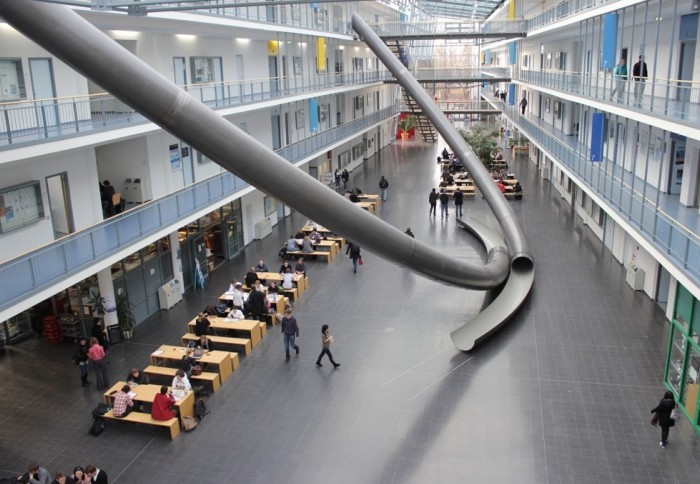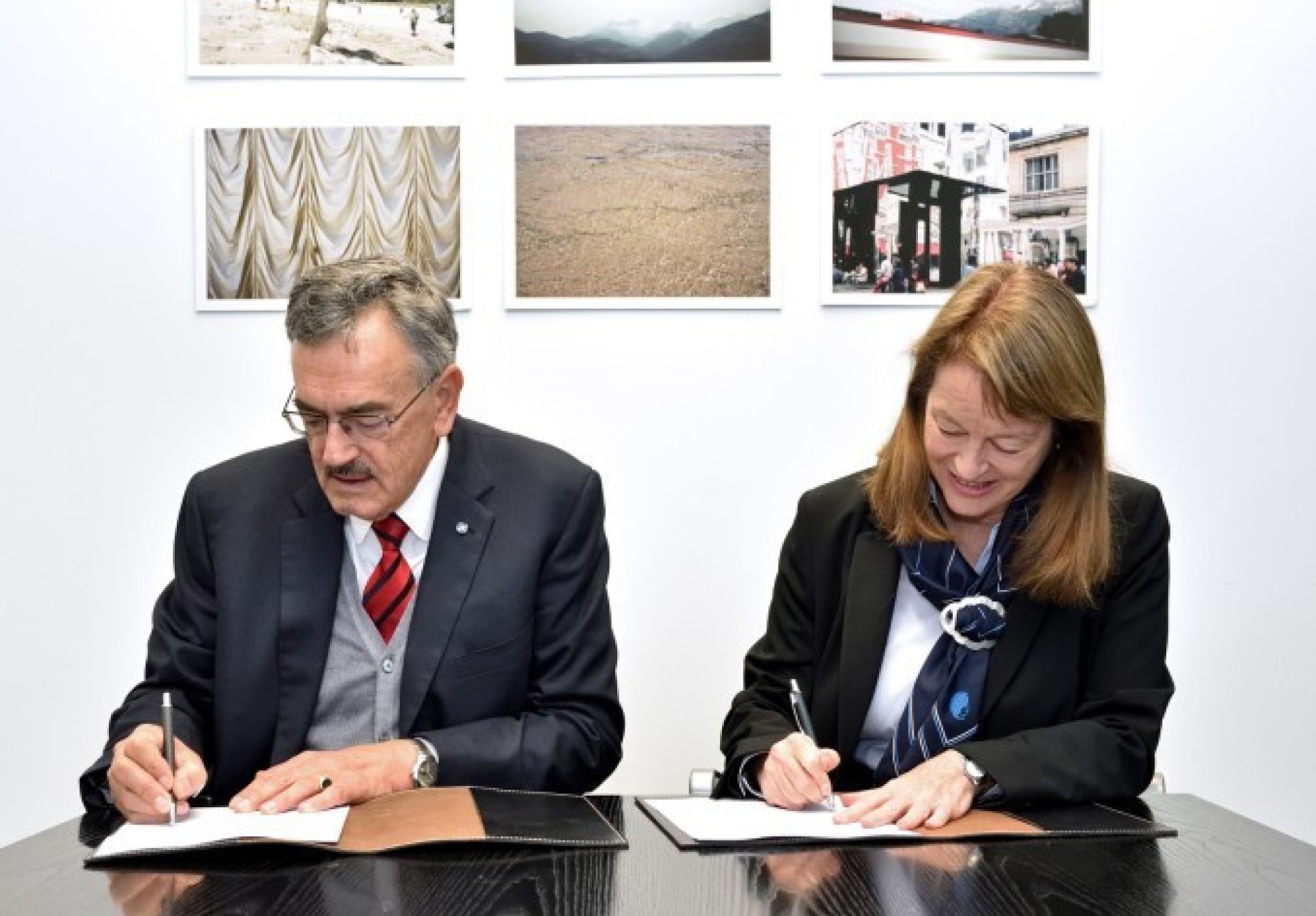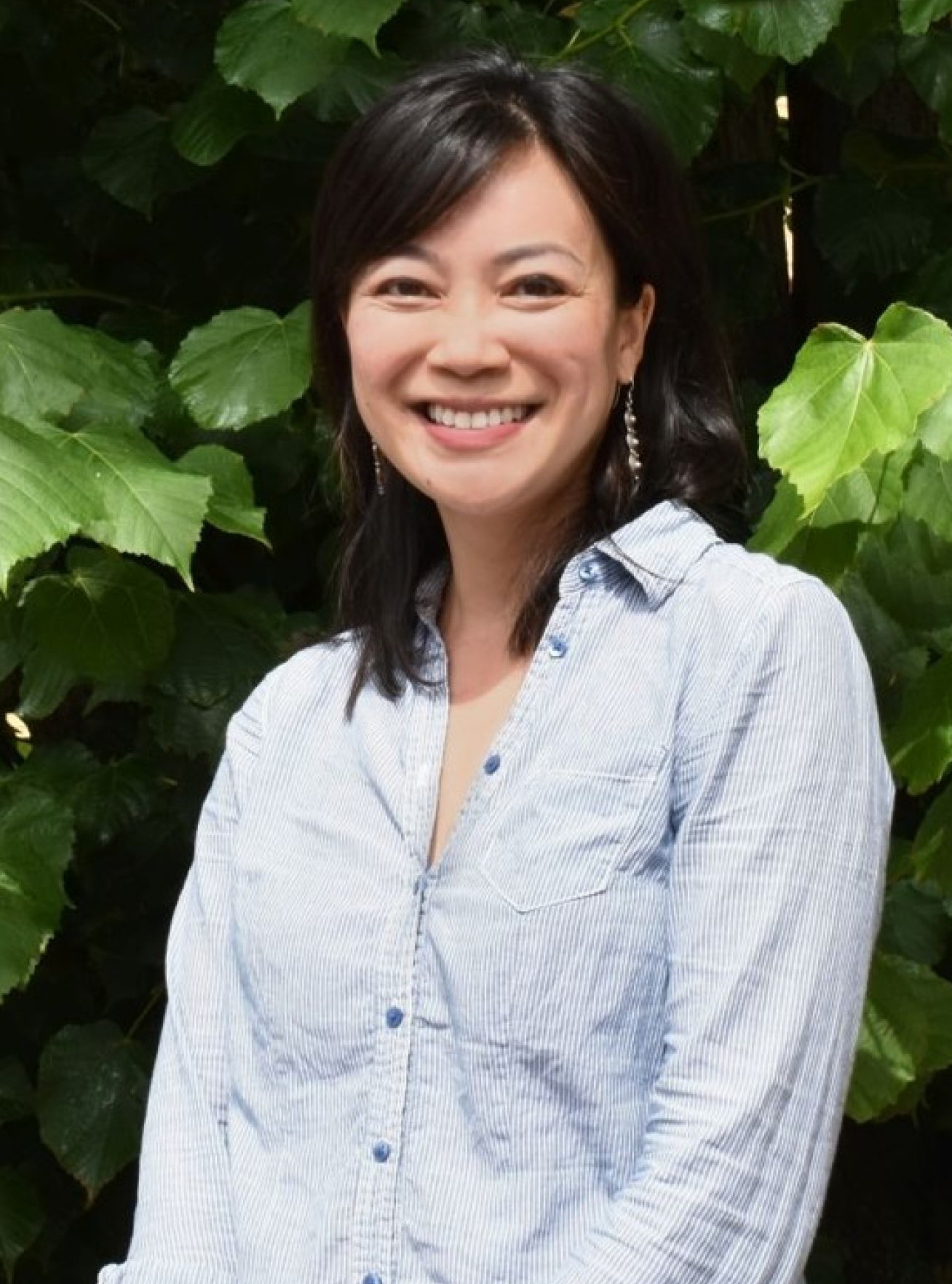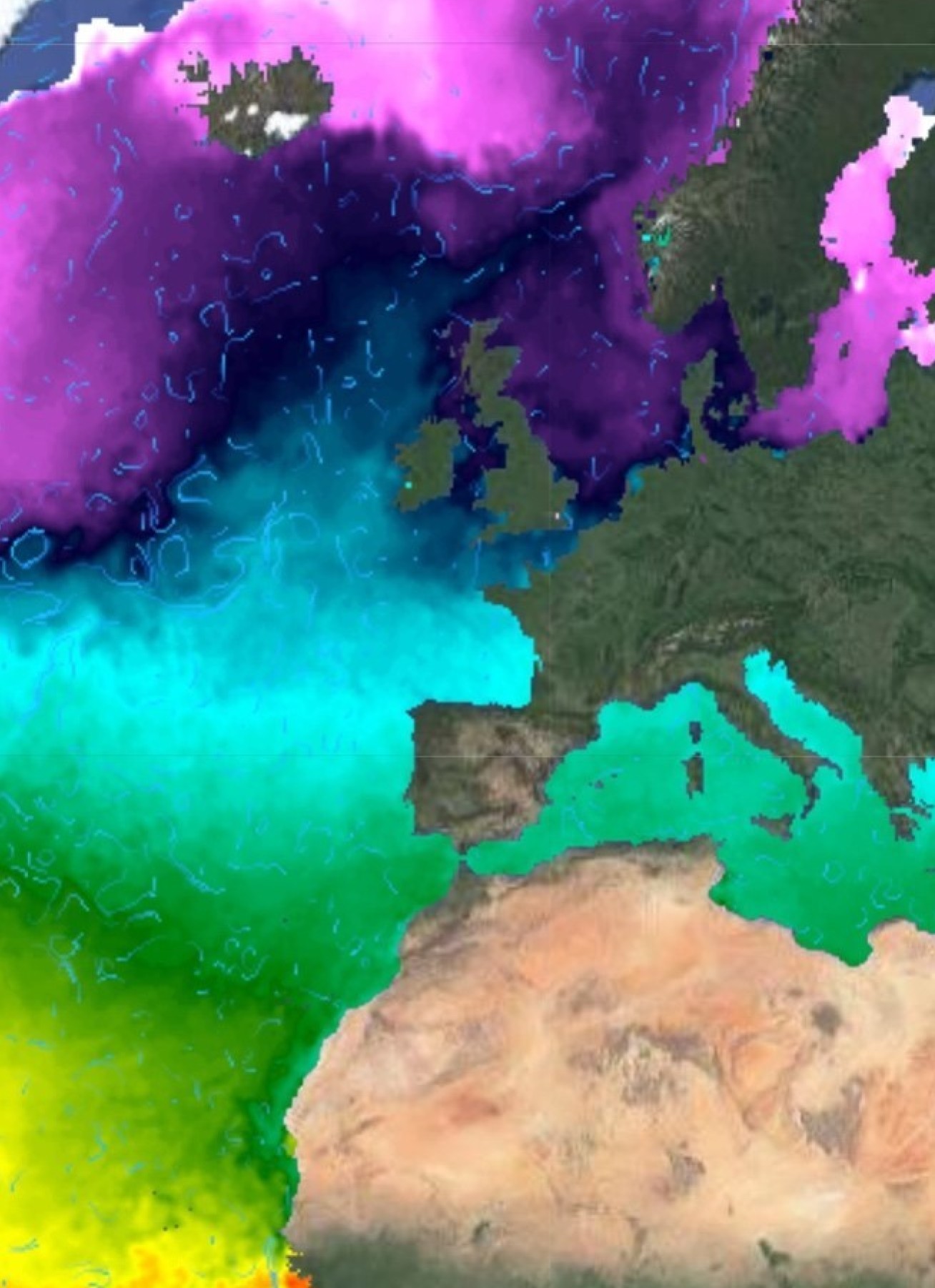Imperial and Germany’s TUM driving exciting collaborative research and education


Faculty building for the Departments of Mathematics and Informatics at TUM

Imperial and the Technical University of Munich are deepening ties across a range of research fields as well as innovative delivery of education.
The Technical University of Munich (TUM) is one of Germany’s most international and entrepreneurial universities, producing highly ranked research, like Imperial, in science, engineering and medicine.
The two institutions are currently involved in over 50 active joint projects.
In the past year, the partnership launched a second cohort of six collaborative PhD projects; awarded 15 new research seed funded projects; successfully ran a pilot programme to network Imperial and TUM early career researchers; and is launching a second call for innovative virtual education projects.

Research topics range from gaining a better understanding of heart rhythm problems (arrhythmias) using physics inspired neural networks, to modelling of earth surface dynamics. Meanwhile collaborative education projects include co-creative learning for engineering and robotics innovation and teaching computer graphics in an internet browser.
Imperial’s Vice Provost for Research and Enterprise, Professor Nick Jennings, said: “This deep collaboration between two of Europe’s leading research institutions is helping to pave the way for new innovations, technologies and therapies that will address many of the pressing global challenges we face. The partnership is also helping to train the next generation of scientific leaders, for whom collaboration and multidisciplinary thinking will be second nature.”
Developing cross-disciplinary research clusters
Imperial and TUM co-deliver a number of collaborative programmes, including the Imperial-TUM Joint Academy of Doctoral Studies (JADS); TUM-Imperial Collaboration (Seed) Fund; Imperial-TUM Education Seed Fund. TUM also delivers a TUM Global Incentive Fund, which supports TUM Principal Investigators (PIs) to develop collaborative projects with Imperial.
Most recently, the two institutions awarded six new Joint Academy of Doctoral Studies (JADS) projects. The JADS programme is aimed at developing cross-disciplinary clusters of PhD students who will have access to world-leading academic supervisors and state-of-the art facilities at both institutions. The PhD scholars work across fields where both Imperial and TUM have taken a global lead in research, innovation and breaking down disciplinary boundaries.
The cohort starting in 2021 will focus on the theme of “Mathematics of Information: Theory and Application.”

Co-leading one of the 2021 JADS projects is Dr Anthea Monod, Lecturer in Biomathematics (Department of Mathematics). Dr Monod also has two other active Imperial-TUM projects – a TUM-Imperial Collaboration (Seed) Fund and TUM Global Incentive Fund.
The JADS projects she co-leads with Professor Mathias Drton at TUM is aiming to develop statistical models to track and understand the clonal evolution of leukaemia, using proprietary molecular data provided by the Francis Crick Institute.
She comments: “The goal is to learn dependence structures of molecular biological data in different instances of the disease and then compare them to statistically quantify the difference in cancer evolution. This will be done before and after treatment, between different cancer subtypes, at different stages of disease progression and between different regions of the bone marrow.”
Professor Almut Veraart (Mathematics) co-leads another JADS project – modelling, prediction and anomaly detection of earth and ocean surface dynamics. This is in collaboration with Professor Dan Crisan at Imperial and Dr Marco Körner and Professor Martin Werner at TUM.

Professor Veraart explains that the launch of modern Earth observation satellite missions makes it possible to monitor the Earth at various spatial and temporal scales with different sensors. Combined with powerful data-driven modelling techniques and machine learning that opens up new possibilities.
“If this expertise can be joined, it seems possible to gain deeper and more detailed insights into the Earth system,” she comments. “We identified two sub-processes to investigate – the seasonal growth of crops cultivated on the Earth’s surface and the currents occurring in the oceans. Although occurring at different spatio-temporal scales, we believe they can be modelled in a generic data-driven way.”
Bold new applications in data science
The TUM-Imperial Collaboration (Seed) Fund supports collaborations that fall within the theme of data and its application in science, technology, medicine and business. The goal is for these collaborations to support Imperial academics to initiate and pursue collaborations with TUM colleagues and ideally to lead to new science and to future applications for external funding.
Dr Marta Varela is a Research Fellow in the National Heart & Lung Institute, who co-leads a TUM Collaboration Fund in addition to a Global Incentive Fund project, both focussed on heart rhythm problems (arrhythmias). Arrhythmias are often linked to changes in the electrical properties of the heart but it can be difficult to reveal the type or location of these changes which take place.
Dr Varela comments: “Working in collaboration with the TUM, we have created a new machine learning tool to infer the electrical properties of heart tissue from electrical measurements. In an article currently under review, we show that our tool – EP-PINNs (Electrophysiology Physics-Informed Neural Networks) – can characterise the effect of anti-arrhythmic drugs on the electrical properties of the heart and identify regions of scar. We now plan to further develop and test EP-PINNs on patient data to bring it closer to clinical use.”
As well as health applications there are projects focused on data in engineering.
Drs Panagiotis Angeloudis and Yuxiang Feng are working with Professor Constantinos Antoniou and Dr Tao Ma at TUM on a unique and timely seed fund project.
Dr Angeloudis explains: “This project aims to assess the impact of COVID-19 on the variations of network-level traffic flow patterns in London, with particular emphasis on the effects of the second lockdown. Our analysis has leveraged state-of-the-art computer vision techniques, that were applied on public traffic video feeds, that are openly made available by Transport for London.
“In close collaboration with the TUM team, we have developed an automated traffic analysis pipeline that extracts key performance indicators for segments of the London road network, such as traffic volumes, vehicle densities, and vehicle, bicycle and pedestrian trajectories. Findings from this study can provide more insights into the network-level traffic flow patterns, which can help to improve traffic efficiency and safety. The techniques that were developed as part of this project can be easily adapted to other cities with surveillance cameras.”

A global network of collaborators
The TUM Global Incentive Fund supports the initiation and deepening of international relationships worldwide and in particular with selected partner universities, such as Imperial, Tsinghua University in China and Kwame Nkrumah University of Science and Technology (KNUST) in Ghana.
In the latest round of funded projects Imperial’s Dr Theoni Georgiou (Materials) is leading a project with Professor Christine Papadakis at TUM focused on hydrogels, which are biocompatible polymers that have the ability to absorb a large amount of water.
She comments: “This project aims to investigate hydrogels that respond to temperature. These thermoresponsive hydrogels have exciting applications in drug delivery and as scaffold for tissue engineering. In this project our group will be fabricating these materials that will be investigated with advanced characterisation techniques by Professor Papadakis’s group at TUM. The combined expertise of polymer chemists and physicists along with forefront methods will result in a deepened understanding of the structure, mechanical properties and response of these materials that is crucial to their future application.”
Training the next generation of science leaders
Last year saw the launch of the first Imperial-TUM Education Seed Fund Projects. The aim is to develop innovative, inclusive and impactful online experiential learning opportunities in partnership with our students.
The 2021 call for Imperial-TUM Education Seed Fund applications is now open with a deadline for submissions of 30 September 2021.
A European Talent Academy was launched as part of the partnership in 2020, to support early career researchers from Imperial and TUM who work in similar research areas, and to provide training in EU funding opportunities relevant for their areas of work. It also provides the opportunity to meet policy-makers and others connected to EU research funding and gain insights into how funding decisions are made and therefore to start thinking early in careers about accessing research funding to support career and research goals.
The first edition incorporated the following challenge: ‘Climate change and energy research post Covid-19 – can the European Commission’s Green Deal deliver the right support to the research community?’
To plan is to continue the European Talent Academy through 2021 and beyond, expanding to include Politecnico di Milano.
Launching on 30 September will be a new European Partners Fund call and TUM Global Incentive Fund. Principal Investigators who have proposals for new collaborations are encouraged to apply.











Responses